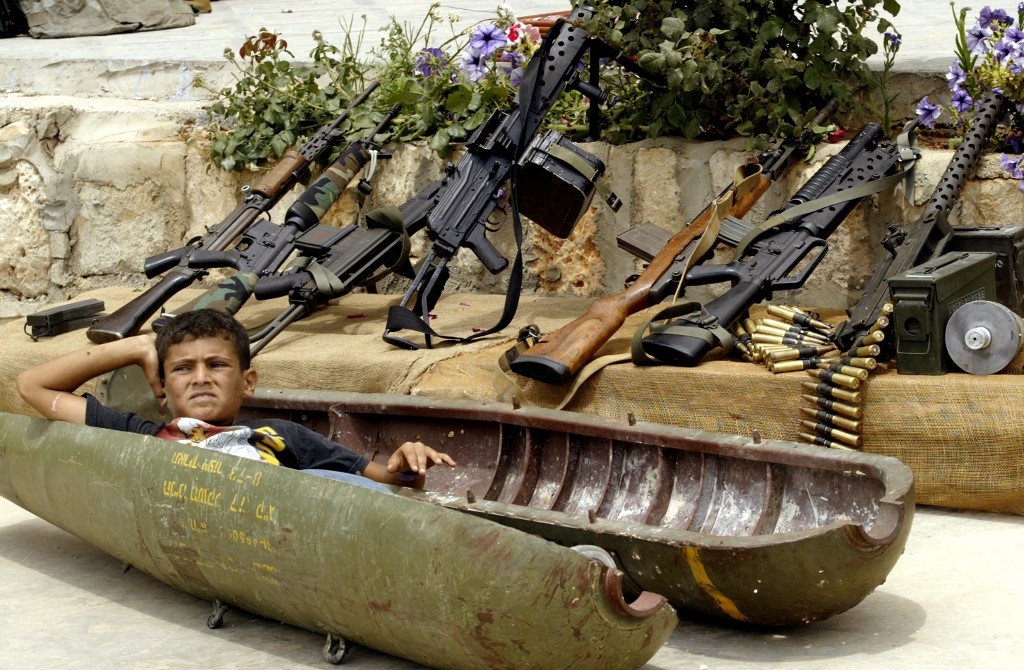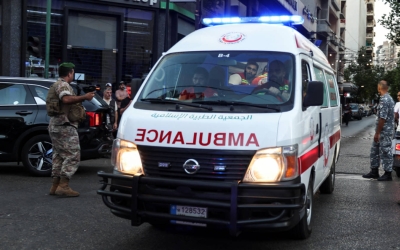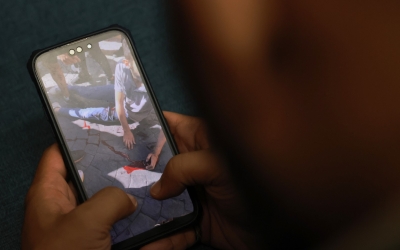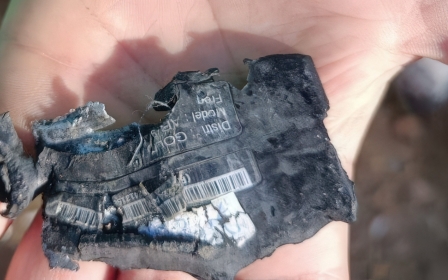Bombs in toys: A brief history of Israeli booby traps in Lebanon

Lebanon is still reeling from two waves of Israeli-attributed pager and walkie-talkie explosions that have killed 32 people and wounded thousands more.
Although Israel has not claimed responsibility for the attacks, pro-Israel voices have been quick to praise the attack as a prime example of the country's skill at conducting surgical strikes targeting its enemies without inflicting collateral damage.
This is despite the fact that two children were killed and numerous civilians wounded in the attacks, leading to condemnation from rights groups who say the indiscriminate nature of the weapons could violate the laws of war.
A source close to Hezbollah told Middle East Eye that the pagers were used by a "wide network of people, including administrators, medical workers, paramedics, media workers and other civilian members".
"They are usually used for directives, summoning to meetings, for emergencies or state of alert," the source explained.
New MEE newsletter: Jerusalem Dispatch
Sign up to get the latest insights and analysis on Israel-Palestine, alongside Turkey Unpacked and other MEE newsletters
But this is far from the first time Israel has used unorthodox booby-trap style methods to target Lebanon, nor is it the first example of civilians and children being maimed and killed using such weaponry.
MEE takes a look at this controversial history:
Cluster bomb and landmines
More than a million cluster bombs have been littered across southern Lebanon as a result of Israeli assaults on the territory over the years.
Since the 2006 conflict between Israel and Hezbollah, which saw unprecedented use of the widely banned weaponry, scores have been killed in Lebanon after coming across them.
Many children playing in the region have found these unexploded munitions.
“They seem innocuous, especially to the curious mind of a child,” said Chris Clark of the UN Mine Action Coordination Centre (UNMACC) in Lebanon, speaking in 2006.
“They’re small, they easily conceal themselves amongst all the rubble or the debris of the bombing. We find that children unwittingly pick them up and then, sadly, suffer injuries from them.”
Both Lebanon and Israel are among the 33 countries that have not signed the Anti-Personnel Mine Ban Convention (APMBC).
Israel occupied southern Lebanon between 1982 and 2000 and during that period planted hundreds of thousands of landmines.
By the time they left, roughly 37,000 acres of Lebanon were thought to be contaminated with unexploded mines and improvised explosives planted by different parties to Lebanon's civil war.
As of 2023, mine-clearing activities had cleared about 80 percent of this area of explosives.
The need to protect children in southern Lebanon from both mines and cluster bombs has led to some novel solutions - including the deployment of clown troupes to educate them about the dangers of unexploded ordinance.
However, according to Mine Action Review, work on clearing mines has been suspended as a result of the outbreak of hostilities between Israel and Lebanon since October.
"As a result, Lebanon is not on track to meet its extended Convention on Cluster Munitions (CCM) Article 4 clearance deadline of 1 May 2026, and at current capacity predicts it will not meet its obligations until 2030," said the site.
Bombs in toys
But a much more sinister accusation has also circulated since the 90s - that of bombs being dropped by Israeli aircraft in southern Lebanon intentionally concealed in children's toys.
Lebanese newspaper L'Orient-Le Jour reported on the phenomenon in 1997, citing a number of examples including a nine-year-old girl who had her right hand shredded after finding a "big apple-green plastic jeep, with six big black wheels" that blew up in her hand after finding it near her village.
They also mentioned the example of a child who was left with severe burns after finding a booby-trapped flashlight and another girl who was killed after exclaiming "I found a doll!" before being blown up.
An officer of the United Nations Interim Force in Lebanon (Unifil) confirmed to AFP at the time that the objects were mainly dropped by helicopter.
"It can be a toy or have the shape of an ordinary stone," he said on condition of anonymity.
In 1998 a letter from the Permanent Mission of Lebanon to the United Nations addressed to the secretary-general also repeated the claim that Israeli fighter planes had "attempted to kill children by dropping thousands of booby-trapped toys on Lebanese villages and towns".
"The Israeli occupying forces have used this method through the years and continue to do so, the most recent example being when booby-trapped toys were dropped on the town of Nabatiyah, killing and injuring children and permanently disfiguring others," he said.
For their part, Hezbollah at the time said among the items they found were a golden egg, fluorescent yellow cones, a Snoopy dog and a talking doll they said was set to explode when the cord was pulled.
Israel denied the accusations at the time, calling the allegations "despicable".
Nevertheless, a report by the UK Foreign Affairs Committee in 2000 warned of the dangers of unexploded bombs in southern Lebanon, mentioning the use of "booby-trapped toys, allegedly dropped by the Israeli airforce near Lebanese villages adjacent to the so-called security zone".
Speaking at the UN on Wednesday, UN Secretary-General Antonio Guterres re-emphasised that "civilian objects" should not be part of warfare.
"I think it's very important that there is an effective control of civilian objects, not to weaponise civilian objects - that should be a rule that...governments should be able to implement," he said.
"What has happened is particularly serious, not only because of the number of victims that it caused, but because of the indications that exist that this was triggered, I would say, in advance of a normal way to trigger these things, because there was a risk of this being discovered."
Middle East Eye delivers independent and unrivalled coverage and analysis of the Middle East, North Africa and beyond. To learn more about republishing this content and the associated fees, please fill out this form. More about MEE can be found here.






